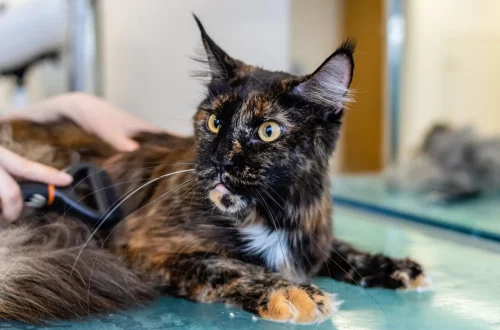
Exploring Small Types of Tortoises: Characteristics and Care Tips
Tortoises are fascinating creatures that have captured the hearts of many pet owners and nature enthusiasts alike. These reptiles have been around for millions of years, showcasing a remarkable adaptation to various environments. Among the diverse species, small tortoises stand out due to their manageable size and unique characteristics that make them appealing to those new to the world of reptiles.
Beyond their appealing appearance, small tortoises exhibit a variety of behaviors and traits that can be both intriguing and educational. They thrive in different habitats, from arid deserts to lush forests, showcasing their adaptability. However, keeping a tortoise as a pet involves understanding their specific needs, including diet, habitat requirements, and social interactions.
Whether you are an experienced reptile keeper or considering a small tortoise as your first pet, it is essential to be well-informed about the different species and their care. Each tortoise type has its own set of characteristics that can influence how you provide for them. By understanding these fascinating creatures, you can ensure they live happy, healthy lives in your care.
Understanding Small Tortoise Species
When exploring small tortoise species, several notable types stand out, each with its own unique characteristics and care requirements. The Russian tortoise, for instance, is widely popular among tortoise enthusiasts due to its hardy nature and relatively small size. Typically reaching about 6 to 10 inches in length, this species is known for its domed shell and sturdy limbs, which help it navigate its natural habitat of rocky hills and scrublands.
Another fascinating species is the Greek tortoise, which is also small, usually ranging from 8 to 12 inches. The Greek tortoise is recognized for its striking patterns and colors, with a shell that can display beautiful yellows and greens. These tortoises are herbivorous, primarily feeding on a diet of leafy greens and vegetables.
The Pancake tortoise is another small species that captures attention due to its unique, flattened shape. Native to the rocky areas of East Africa, this tortoise can grow up to 6 inches in length. Its distinct appearance and climbing ability make it a unique addition to any tortoise collection. Due to their specific habitat needs, pancake tortoises require a more specialized environment compared to other small tortoises.
Each of these species has its own temperament and social needs. While some may be more solitary, others can thrive in social settings. Understanding the differences among these species is crucial for prospective owners to create a suitable environment that enhances their well-being.
Essential Habitat Requirements
Creating the right habitat is vital for the health and happiness of small tortoises. The enclosure should mimic their natural environment as closely as possible. For species like the Russian tortoise, a spacious outdoor enclosure with plenty of hiding spots, such as rocks and plants, is ideal. This allows them to exhibit natural behaviors like basking and burrowing.
Indoor enclosures should also be spacious, with adequate ventilation and a substrate that allows for digging. Many owners use a mix of coconut coir and soil to provide a comfortable digging medium. Additionally, a shallow water dish should be provided for hydration, as tortoises benefit from soaking occasionally to maintain proper hydration levels.
Lighting plays a crucial role in a tortoise’s habitat. UVB lighting is essential for tortoises, as it helps them synthesize vitamin D3, which is critical for calcium absorption and overall health. A basking light should also be included to create a temperature gradient within the enclosure, allowing the tortoise to regulate its body temperature effectively.
Temperature control is another essential aspect of a tortoise’s habitat. The basking area should be around 95°F, while the cooler side of the enclosure should range from 70°F to 80°F. Maintaining these temperature gradients can help prevent metabolic issues and promote proper digestion.
Finally, it’s important to consider the humidity levels appropriate for the specific species. For instance, the Greek tortoise prefers a drier environment, while the Pancake tortoise may require slightly higher humidity. Regular monitoring of humidity and temperature will help ensure your tortoise thrives in its habitat.
Feeding and Nutrition Tips
Proper nutrition is fundamental to the health of small tortoises. Most species are herbivorous, which means their diet should primarily consist of leafy greens, vegetables, and some fruits. A balanced diet helps prevent common health issues, such as shell deformities and metabolic bone disease.
For a Russian tortoise, a diet rich in dark leafy greens, such as collard greens, dandelion greens, and kale is essential. Avoid feeding them high-protein foods, as this can lead to health complications. It’s also important to provide a variety of foods to ensure they receive all the necessary nutrients.
Greek tortoises, on the other hand, thrive on a similar diet but can also benefit from the occasional commercial tortoise mix or calcium supplement. When feeding fruits, it should be in moderation, as too much sugar can lead to obesity and other health issues.
The Pancake tortoise is more specialized in its dietary needs. These tortoises require a diet that mimics their natural habitat. Offering a mix of leafy greens, flowers, and some fruits can help replicate their natural feeding habits. Additionally, providing cuttlebone can help ensure they receive adequate calcium, which is crucial for shell health.
It’s important to monitor feeding habits and adjust portions as necessary. Overfeeding can lead to obesity, while underfeeding can result in malnutrition. Regularly observing your tortoise’s weight and overall health can help you make informed decisions about their diet.
Behavior and Social Interaction
Understanding the behavior of small tortoises is crucial for creating a harmonious environment. While they may seem solitary, many tortoise species can benefit from social interactions, provided the conditions are right. Russian tortoises, for example, can be kept in groups, but care should be taken to monitor their interactions, as they can become territorial.
Greek tortoises are generally more social and may enjoy the company of other tortoises. However, it’s still important to introduce new tortoises gradually and in a neutral territory to minimize stress and aggression. Observing their behavior during introductions can help ensure a successful integration.
Pancake tortoises are typically more solitary and may not thrive in group settings. Their climbing and exploring tendencies make them more independent. Providing plenty of enrichment, such as hiding spots and climbing structures, can help stimulate their natural behaviors and keep them engaged.
Regular handling is important for small tortoises to become accustomed to human interaction. However, care should be taken not to stress them out. Short, gentle interactions can help build trust and make them more comfortable in their environment. Remember to wash your hands before and after handling to prevent any potential health issues for both you and your tortoise.
In conclusion, small tortoises are captivating creatures that require specific care and understanding. By being aware of their unique characteristics, habitat needs, nutritional requirements, and social preferences, you can create a nurturing environment for these remarkable reptiles.
**Disclaimer: This article is for informational purposes only and does not constitute medical advice. For any health concerns regarding your tortoise, please consult a qualified veterinarian.**




